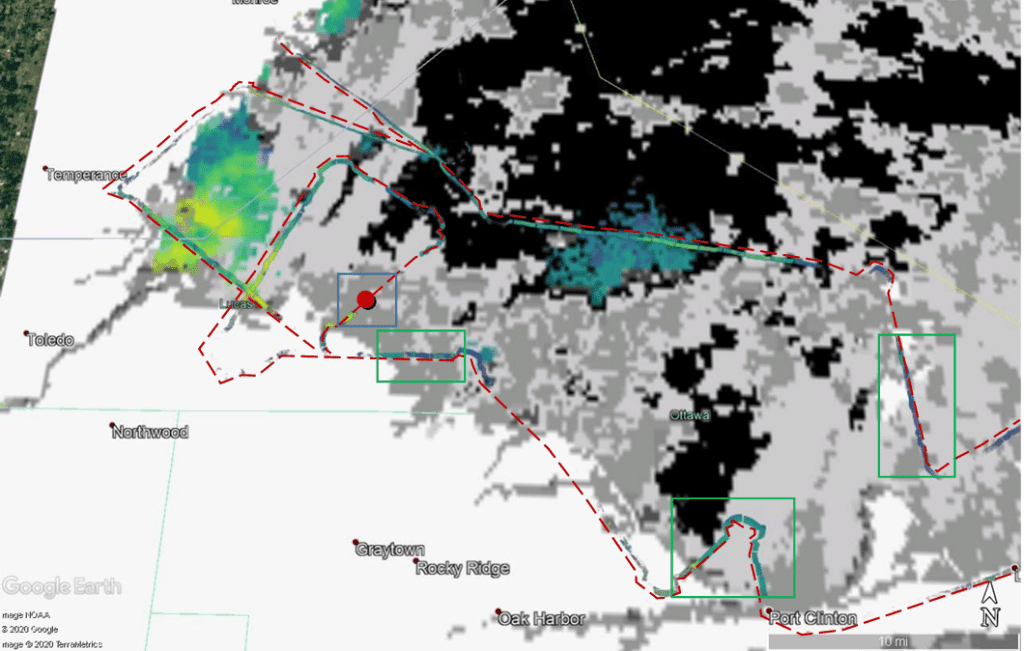NOAA GLERL Great Lakes Cyanobacteria Harmful Algal Bloom Monitoring
While the pandemic has presented challenges to field operations these past few months, NOAA Great Lakes Environmental Research Laboratory (NOAA GLERL) has worked to continue collecting data in a safe manner. Data provides critical monitoring of cyanobacteria harmful algal blooms (cyanoHABs) in the western basin of Lake Erie. Crewed aircraft flyover operations, while delayed, continued to provide robust data sets beneath clouds and nearshore. In order to operate comfortably, crewed flyover operations are performed 3500-6500 feet with possible interference from cloud cover that is often forming as low as 1800 feet above the western basin. Next summer, with the support of UASPO funding, GLERL will operate a multi-rotor Uncrewed Aircraft System (UAS) to fly beneath the clouds and provide unprecedented imagery of areas close to shore, addressing a key information gap. The combination of these data sets will support the NOAA Lake Erie HAB Forecast.
NOAA GLERL Great Lakes Cyanobacteria Harmful Algal Bloom Monitoring Read More »

